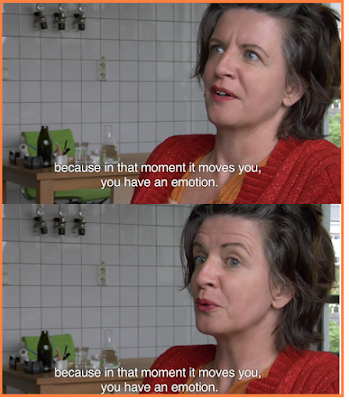Former UT professor Tom
Kodadek returned to address the postdoctoral student association of the School of Biological Sciences on April 25 Florida
He first identified the standard approach to any drug therapy:
1. Perform basic research
on the disease mechanism,.
2. Identify molecules in
the blood that are unique to that disease, or whose levels change drastically.
3. Develop a specific
method to measure the level of that molecule in the blood.
4. Commercialize.
This fits our standard
model for diagnosis. The patient feels
bad and goes to a doctor for treatment.
Tests are run. A cause is
hypothesized and treatments begin while the patient’s course is monitored. The shortcomings with the standard approach
begin with the fact that we have to wait until we feel bad to get a
diagnosis. Also, tests are heterogeneous: any
symptom suggests many tests.
 |
| Dr. Thomas Kodadek (left) at the Reception. |
Kodadek then offered a
better approach. His theory is that antigens
must exist before symptoms reach perceptible levels: you are sick before you
have a fever. With pre-symptomatic screening we could monitor for any active
disease in its early stage, before the symptoms appear. His recommended course is to routinely monitor
the levels of dozens of disease-specific antibodies as part of any periodic
medical check-up.
To achieve that, we
need to develop a large, broad, and deep array of synthetic artificial molecules
that act as antigen surrogates. This is possible through combinatorial
chemistry.
He then rapidly outlined
the some of the details of his methodology for the audience of post-doctoral
biologists at the School
of Biological Sciences
Having left the University of Texas ,
he thought that he was about to go to San
Francisco
Opko had just suffered a
failed third-stage test of a major product initiative. Phil Frost had a company in need of new
work. Opko also acquired Cytochroma, Inc., a company with “a suite of
products for treatment of secondary hyperparathyroidism and hyperphosphatemia
in chronic kidney disease patients.”
Another Cytochroma product screens for vitamin D deficiency. In fact, said Kodadek, we may find that we
are in the midst of an epidemic and not know it because we only now are
coming to understand the many functions of that essential nutrient.
Opko is also pursuing a
screen for neuromyelitis optica (NMO). NMO is marked by the presence of AQP4 (aquaporin 4) and anti-AQP4 antibodies. With Bindu L. Raveendra, Hao Wu, and
others, Kodadek published “Discovery of Peptoid Ligands for Anti-Aquaporin 4
Antibodies,”in Chemistry and Biology,
(vol 20:3; 21 March 2013, pp 351-359).
In the same issue, working with Yu Gao, Kodadek published “Synthesis and
Screening of Stereochemically Diverse Combinatorial Libraries of Peptide
Tertiary Amides,” (Pages 360-369).
Tom Kodadek with his friends at the Reception
Dr. Thomas Kodadek closed
by summarizing his experiences. “Work on
important projects, not widgets. Incubate for as long as possible in the
university before taking your work to the market. Angel investors are better than venture
capitalists. Focus early on the people
you bring in to start the organization.”
Following the talk the School of Biological Sciences
Previously on Necessary
Facts




















